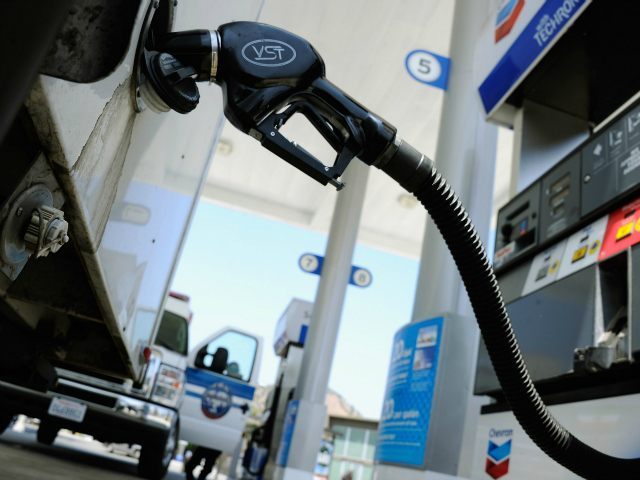California is testing a per-mile “fee” (gas tax) on drivers to spike Caltrans fuel tax collection — which will pay for employee feather-bedding, higher mileage cars and subsidized electric vehicles.
Similar tests have been conducted in Oregon as well, to compensate for drivers using more fuel-efficient vehicles.
Drivers in the State of California have been subject to huge premiums in the price of gas ever since the Democrats gained solid control of Sacramento in the 1980s. Despite still being the third-largest producer of oil in the nation, and residents driving the most miles annually of any state at 329.2 billion, Californians pay about 50 cents more per gallon of gas than the national average.
The biggest reason Californians pay much higher gas prices is that since 1994, the state has been in the top three for state fuel “excise tax” percentage at 2.25 percent, and adds 10.43 cents in a state “use tax” per gallon.
With fuel tax annual collections averaging about $5.5 billion over the last three years, California should have seen tremendous road building and maintenance.
But a 2014 scathing report from the non-partisan Legislative Analyst Office (LAO) found that the California Department of Transportation (Caltrans):
- Lacks performance data to adequately measure program effectiveness;
- Is at least 35 percent overstaffed at a cost of at least $500 million; and
- Has limited legislative and external oversight.
The LAO analysis found that total regular, overtime and benefit costs per Caltrans’ 10,149 full time employees averaged $177,357.
After the state also bled off significant amounts of gas tax funding to address political priorities, such as global warming, the LAO found that about 23 percent of the “capital outlay support” staff that provided “support necessary to deliver transportation infrastructure projects” are no longer involved in road building or maintenance.
But with the price of oil falling from $110 a barrel to the current $44.75 a barrel over the last two years, California’s fuel excise tax per gallon has also fallen from 39.5 cents per gallon to 27.8 cents per gallon, effective on July 1.
With total fuel taxes collection projected to fall to about $4.8 billion over the next 12 months, versus $6.2 billion three years ago, California’s politicians must follow the LAO’s advice and cut Caltrans spending by 35 percent or find another source of tax revenue.
Preferring more tax revenue, the California Legislature has mandated Caltrans to try to recruit 5,000 California volunteers to participate in a test of the “California Road Charge,” beginning this month.
Drivers participating in the test will log their speedometer mileage online, and Caltrans will generate simulated monthly statements telling them how much they would pay on a pay-by-mile fee system, versus fuel taxes at the pump.
California has learned that charging more for buying gas causes people to game the system by acquiring higher-mileage and electric vehicles. To avoid similar outcomes for California Road Charge, the state is tinkering with potentially offering volunteers the choice of “purchasing” an unlimited road use permit, or buying a fixed amount of miles.
In anticipation of trying to take “road charge” national, the Obama administration has reportedly been coordinating with Governor Jerry Brown and his Democratic legislature allies to pass a bill requiring car makers to install a black box that would automatically report and message mileage, location and accident data. But the move has been fiercely opposed by privacy advocates on the left and the right

COMMENTS
Please let us know if you're having issues with commenting.